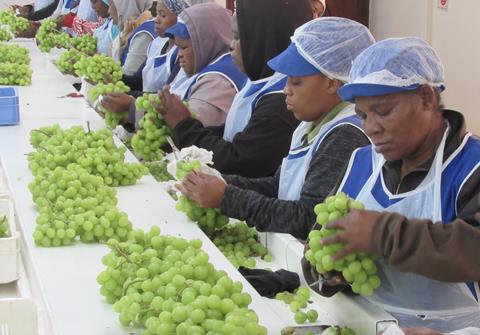The industry recorded its largest-ever national harvest, producing 78.9 million cartons (4.5 kg equivalent), a 4% increase from the previous season. Of these, 77.4 million cartons were exported, marking a 5% rise in exports, according to Jacques Ferreira, the commercial affairs manager for the South African Table Grape Industry (Sati). Additionally, during the peak export season (weeks two to six of 2025), the industry set a new record by inspecting over seven million cartons weekly.
Sati projects further yield improvements as higher-yielding cultivars replace existing vineyards, with inspection volumes growing by 3.2% over the last decade. Export volumes from the Cape Town Container Terminal and Multi-Purpose Terminal rose to 90%, up from 82% in the previous season. Meanwhile, exports through Eastern Cape ports dropped to 6% from 11%, and Durban saw a decline from 7% to 3%. Walvis Bay handled 1% of exports, compared to none last year. Namibia exported 8.8 million cartons this season, slightly lower than the 9.1 million cartons from the previous year.
Antoinette van Heerden from the Fresh Produce Exporters Forum (FPEF) credited improvements at the Port of Cape Town for the enhanced performance. These included shorter waiting times, reduced anchorage delays, additional work shifts during holidays, and public-private initiatives like installing two 500 kVa generators with container plug points at the harbor.
Despite wind delays causing 245 hours of disruption in February (above the four-year average of 162 hours) and 214 hours in March (compared to an average of 140 hours), productivity increased. Gross crane moves per hour (GCH) rose to an average of 13 in the first 13 weeks of the year, up from 10 last year.
The industry also benefited from a predictive logistics model, leveraging a digital twin of the harbor to optimize grape network movements across ports. According to Mark Soden, project lead at Transnova, this model may be expanded to include other fruit types for broader supply chain insights in the future.



